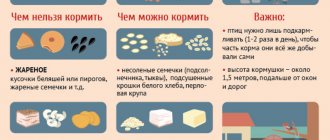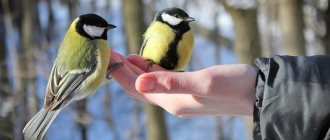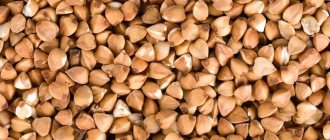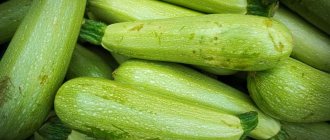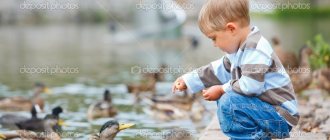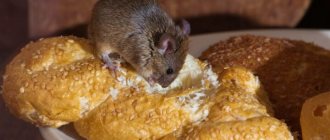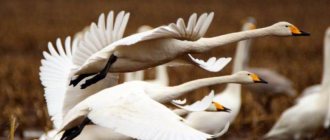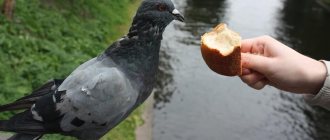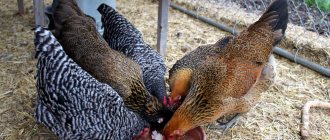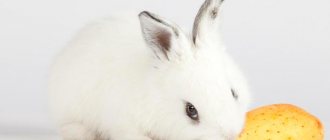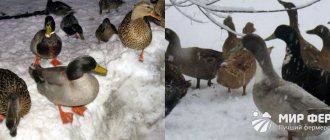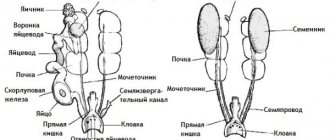A good feed and an excellent source of calcium for all types of birds would be a chicken egg shell, as well as regular chalk - you can also put them in the feeder.
In the forest or just outside the city, tits, bullfinches, jays, fieldfares, nuthatches, sparrows, goldfinches, waxwings, pikas, siskins and other wild birds become frequent guests of feeders. On the streets of the city they are also supplemented by magpies, crows, jackdaws and pigeons. Recently, ducks have also been left to spend the winter in city parks: experts explain this by the large number of feeders, but it should be remembered that ducks, like other birds, should never be given rich bread - this product has a negative effect on the digestive system, as a result of which animals die.
Do not miss
- Do not miss
What to feed animals: 6 myths about pet nutrition
How to properly feed tits and sparrows in winter
Before you run and pour mountains of food into the bird feeder, you should remember that there should not be a lot of it. But this only applies to those cases when there is no severe frost outside. The whole point is that tits and sparrows need to be fed, and not given a feast. Otherwise, they will stop searching for food on their own, which will have a detrimental effect on their ability to survive.
It is best to place feeders on tree branches, but high from the ground. This is done to prevent rodents and pets from getting to the food and birds. In addition, food should be added to the feeder on a schedule so that tits and sparrows become accustomed to the schedule. It should also be taken into account that the process of feeding birds should be carried out until spring, so that hungry birds do not circle around the feeder.
Where can you put food?
People often sprinkle grain on the ground or stumps in parks or forests. You can see for yourself that this is not the best idea by observing the birds for a while. To avoid feeding pigeons, rooks, magpies, mice and rats, it is better to make a small feeder and hang it on a branch. Then large birds will not be able to drive away small tits from the feeder. In addition, make sure there is a “roof” that will protect the food from the snow - without shelter, the food will quickly get wet.
Examples of feeders:
- From a plastic bottle
- Made of wood
What you can and cannot feed tits and sparrows in winter
What you can feed:
| Food: | Peculiarities: | Who eats: |
| Sunflower (seeds) | Seeds should make up almost 70-75% of the total feed (they are filling and high in calories, and contain a lot of fat) | Tits, woodpeckers, sparrows, nuthatches and other granivorous birds |
| Millet | Raw or boiled cereal (without spices and oil) | Sparrows, goldfinches, pigeons, greenfinches and other granivores |
| Millet | Dry food (often sold as pet parrot food in pet stores) | Sparrows, goldfinches, pigeons, greenfinches and other granivores |
| Oats | Raw or boiled cereal (without spices and oil) | Sparrows, goldfinches, pigeons, greenfinches and other granivores |
| Wheat | Raw or boiled cereal (without spices and oil) | Sparrows, goldfinches, pigeons, greenfinches and other granivores |
| Rice | Raw or boiled cereal (without spices and oil) | Sparrows, goldfinches, pigeons, greenfinches and other granivores |
| Meat | Pieces of raw or dried meat, finely chopped. Without any salt or spices! | Tits, nuthatches and other species (crows, jackdaws and magpies may arrive) |
| Salo | Raw lard without salt! It can be strung on a thread and hung | Tits, nuthatches and other species (crows, jackdaws and magpies may arrive) |
| Beef fat or chicken fat | It can be mixed with bread or placed separately in the feeder. Fat should not be salty! | Tits, nuthatches and other species (crows, jackdaws and magpies may arrive) |
| Dried rowan (viburnum, hawthorn) | The berries must be prepared in advance and dried in the fall. They can be placed in a feeder or hung with beads | Bullfinches, waxwings |
| Maple seeds (lionfish) | They should be collected in the fall, when they fall from the trees. In winter, such food is often inaccessible to birds, as it is covered with leaves. Mud and snow | Bullfinches, waxwings |
| Cones | From various types of coniferous trees, should be collected in the fall | Woodpeckers, crossbills |
| Nuts | Any fresh nuts, not salted (like store-bought peanuts) and not roasted | Woodpeckers jays and other species |
| Acorns | Gathered in autumn | jays |
| Corn | Dried | |
| Watermelon and melon grains | Good source of fats and nutrients (prepared in the summer, dried) | Bullfinches, jays, woodpeckers |
| Pumpkin seeds | Good source of fats and nutrients (prepared in the fall) | All granivorous bird species |
| Chicken egg shell | Serves as a good calcium supplement (you can put a piece of natural chalk in the feeder) | For all types of birds |
What should you not put in bird feeders?
So, the feeder is ready. Now you need to fill it with food for the birds. What can be put in them and what cannot? After all, some products can be deadly for birds!
First, let's look at what absolutely cannot be left as a treat for them. Firstly, under no circumstances should you feed them foods that have expired, musty, sour or fermented foods. You can’t feed them anything fried or too salty.
You can’t put sunflower seeds in their feeders. But many people do this without knowing about their harm to birds. You can’t feed many of them even bread. Mostly small birds. A small amount of dry bread crumbs is still acceptable, especially for tits. Also, you can safely feed bread to pigeons. For others, it will cause indigestion. Pigeons are not afraid of this due to their larger size. And the tit is almost omnivorous. And her digestive system is more susceptible to many foods that are not suitable for others.
Almonds and fruit seeds can cause poisoning in birds. Also, you shouldn’t sprinkle millet on them. Mushrooms and potatoes, as well as rice, are difficult to digest. Therefore, they should not be placed in feeders either.
You should not feed birds with products containing acetic acid and preservatives, various food additives, seasonings and spices. Naturally, canned food is also unacceptable for their nutrition. And, you cannot leave for them food intended for pets: cats and dogs.
All of these foods listed here are very dangerous for birds. Some of them can cause poisoning, others – indigestion.
Tits on a sunflower. A blue tit eats lard. Rock nuthatch eats by hand.
Why can’t you feed birds salted lard and fried seeds?
Any disease that affects a bird in the winter becomes many times more dangerous for it than it would be in the summer. Gastrointestinal diseases in birds are quite common, as during harsh winters they may eat junk food in search of survival. This food is offered to them by a person who knows little about the feeding habits of animals.
INTERESTING: It turns out that chewing gum thrown away by humans is often perceived by birds as a piece of bread. They peck at it, but then die, since the chewing gum completely inhibits and clogs their digestive tract.
When offering lard to tits and other birds, make sure that you do not cut it from the salty part. Salt is poison for birds. Their kidneys and liver cannot digest and remove it, and therefore such a product will be certain death for the small creature.
conclusions
As conclusions, here is a complete guide and advice from ornithologists in one table:
| What can you feed | What not to feed |
| Unroasted and unsalted sunflower, pumpkin, flax, watermelon and melon seeds | Black rye bread |
| Unsalted lard and meat | Millet and wheat groats |
| Dried berries: rowan, viburnum, bird cherry, hawthorn, cranberry, lingonberry | Baked goods and yeast baked goods |
| Wheat bread crackers | Potatoes, peas, cabbage, onions, spicy herbs |
| Eggshells and chalk | Dairy |
| Boiled eggs | Any salted, fried, smoked, spicy foods |
| Non-roasted nuts: walnuts, pine nuts, hazelnuts, almonds, cashews, peanuts | Spoiled food, rancid grain products |
| Cereals: oats, rice, millet, pearl barley, oatmeal | Cereals: millet, buckwheat and barley crops |
How to get kids involved in bird feeding
It is best to feed birds in winter together with children. This way they will learn to care for our smaller brothers and love nature. To do this, you can turn feeding tits and sparrows into a game.
For example, one piece of lard can be tied to a branch, and from the bottom you can make a small swing from another piece. This way the birds will have lunch, and the children will have fun seeing a titmouse on a swing.
If you wait long enough, the bird will take food even from human hands, but for this you will need to be patient.
Alternatively, you can take the pine cones and roll them in bird treats, and then hang them on tree branches. Simply put, the act of simply feeding birds during the winter season can lift spirits even in inclement weather. Everything, of course, depends on a person’s imagination.
Starlings
I immediately remember the plane from the song “Lube”, boards for cozy nests and starlings who look seriously at the starlings. The bird is similar to a blackbird, with light speckles on its plumage. Starlings once lived on plains and swamps, but over time, having learned that the city was full of food, they moved closer to humans. They enjoy eating wasps, grasshoppers, flies, snails, earthworms, caterpillars, dragonflies, as well as berries and fruits. And that’s why summer residents look askance at this bird. Starlings are excellent parodists. They can imitate the voices of other birds and even animals (for example, frogs).
Starlings enjoy eating small insects. Photo: commons.wikimedia.org
What to feed starlings:
- salo;
- seeds or milk thistle;
- cottage cheese;
- white bread dipped in milk;
- insects (can be bought at a pet store);
- chicken eggs.
Barley
One of the most important products in the diet of pigeons is barley. 100 g of cereal contains 10 g of protein, 56 g of carbohydrates, 2.4 g of fat, a lot of fiber and water. It is rich in amino acids, calcium, phosphorus. For this reason, it is possible and necessary to feed pigeons with barley. But moderation should be observed. With excessive consumption of cereals, the egg production of females decreases. Ornithologists advise combining barley with other grains (for example, wheat, oats). Cereals should be excluded from the menu during the molting period.
Chicks eat barley from an early age. But before eating, the grains must be peeled and slightly crushed. If the husk is not removed, it can cause a blockage in the stomach and lead to death.
An excellent option for feeding birds is sprouted barley. Such food can replace greens in late autumn and winter.
Technique for preparing sprouted barley:
- Sprinkle an old baking sheet with a layer (no more than 1 cm thick) of grain.
- The product is poured with water to cover it by about 1.5 cm.
- The cereal is left for 10–12 hours at room temperature.
- The water that is not absorbed is poured out, and then the barley is again filled with clean liquid.
- On the second day, the procedure is repeated, but the amount of water decreases (it only covers the bottom of the pan).
- The container is placed near a heat source, the temperature should be from 22°C, covered with damp gauze, which must be regularly moistened.
After the sprouts appear, the grain can be fed to the pigeons. A handful of product is enough for 10–15 birds.
Buckwheat
Beginning breeders are interested in whether pigeons can eat buckwheat. It can be included in the diet, but in moderation. The content of this cereal should not exceed 5% of the daily value.
In spring and summer, pigeons can eat more buckwheat than usual. Then the amount of cereal increases to almost 50% of the daily diet.
Pigeons eat buckwheat in any form. Before use, dry cereal is ground using a coffee grinder or blender. Birds love to eat buckwheat porridge; you can also steam the cereal and mix it with bran.
In spring, you can give pigeons unpeeled buckwheat. Its shell contains many useful substances. However, the buckwheat pericarp is tough, which means there is a risk that it will scratch the roof of your mouth. Therefore, it is better to clean the cereal.
Menu for poultry canteens
To make bird food more varied, you can prepare a special mixture for bird feeder visitors. As a rule, such a menu should include the following components:
- Sunflower seeds - 500 grams;
- white millet - 350 grams;
- corn grains - 150 grams.
For more high-calorie feeding for feathered visitors to the feeder, you can make a special pie. To prepare the bird treat, you will need three glasses of margarine, which must first be softened (you can replace margarine with any fat). To it you need to add three glasses of millet and one glass of sunflower oil. As additional ingredients you can add rolled oats, apple peel, nuts, sugar. All ingredients must be mixed and frozen until solid. Place the bird pie in a cardboard box and hang it on a tree.
Almost all birds eat bacon skins very well, but they must be finely chopped. They also like canned pet food. Birds will not remain indifferent to boiled eggs or potatoes. You can feed them to rolled oats, but in flakes and not in finished form. In addition, they can be given ordinary dried larvae, insects and pupae.
